
The Australian Academy of Science was delighted to welcome 30 outstanding graduate students from the United States of America to Australia to participate in the East Asia and Pacific Summer Institutes (EAPSI) program for 2015.
This program has been developed in collaboration with the US National Science Foundation and aims to introduce the students to Australian science and engineering in the context of a research laboratory and to initiate personal relationships that will better enable them to collaborate with their Australian counterparts in the future. The eight week program began on 23 June 2015.
The Academy acknowledges the importance of research collaboration that goes beyond national borders and academic disciplines, and places great importance in strengthening exchanges that are both competitive and cooperative among talented young researchers.
It was with great pleasure that I read the participants’ reports to learn that so many achieved, if not exceeded their immediate research goals, and initiated strong collaborative links that will provide the foundation for lifetime cooperative research. I was also pleased to learn that several students have expressed interest in returning to Australia to further their research. These graduate students and the Australians with whom they shared their research will play an important role in advancing cooperative research between Australia and the United States in future years.
I would like to extend my gratitude to the Australian Government Department of Education and Training, as well as the Australian Embassy in Washington DC, for their continued support in funding this program, and of course to our colleagues at the National Science Foundation. Without their kind assistance and cooperation, this important activity could not be sustained.
The Academy looks forward to continuing this program in 2016 and beyond.
Professor Andrew Holmes AM PresAA FTSE FRS
President
Australian Academy of Science
At the Academy’s Ian Potter House:
At the Academy’s Shine Dome:
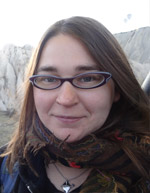
Professor John Drennan
University of Queensland
The interfacial relationship of graphene and silicon carbide in mitigating radiation damage
The goal of this EAPSI project was to develop an understanding of the:
At the University of Queensland, Centre for Microscopy and Microanalysis, I learned various techniques using TEM to develop an understanding of the structure of my materials. I also explored how radiation damaged the various compositions of silicon carbide (SiC) (which consisted of various grain sizes as well as polytypes).
Prior to my arrival in Australia I did atomic force microscopy (AFM) to determine any differences in step height swelling from the ion irradiated polymer derived ceramics (PDC) versus traditionally processed SiC. Using AFM it was observed that the swelling was significantly increased in the traditionally processed SiC in comparison to the PDC processed SiC. However, we did not understand why these results were reasonable. At the University of Queensland I determined that the radiation defects are migrating on the SiC crystallographic plane with the highest packing density (as indicated by the diffraction pattern generated during TEM analysis). Using various TEM techniques at the University of Queensland it appears that since the traditionally processed SiC has significantly increased grain sizes the swelling is exaggerated in the direction of the orientation of crystallographic plane of highest packing density. Whereas, the PDC processed SiC had significantly smaller grains that were randomly oriented. While the swelling was still located on the plane of highest packing density the grains were very small and thus not contributing to such an increase in overall dimensional swelling as experienced by the traditionally processed SiC.
I obtained some very unique results that could lead to developing better radiation damage tolerant materials. This information could very well lead to a separate proposal on developing materials with a variety of grain sizes and comparing their stability in the neutron environment (beyond the ion accelerator experiments and more variety in grain size to understand more specifically what size is ideal).
It was hugely beneficial for me to work and learn from the folks at the Centre for Microscopy and Microanalysis at the University of Queensland. The results that I obtained would not have been possible without their assistance and funding from the EAPSI fellowship. I also found that it is really helpful to learn how research is done in other parts of the world so that I can adapt these practices to my own.
Additionally, I was inspired to learn the TEM techniques at the University of Queensland so that I would be a more competitive applicant when searching for employment. Many of the positions I was interested required these unique skills in which I did not have prior to my arrival in Australia. Now that I have these skills I qualify for various jobs that I would not have been able to apply to otherwise.
Shelly Arreguin was a very welcome visitor to our facilities at the University of Queensland. She quickly fitted into our system and took advantage of the facilities that were available. Before coming to the Centre for Microscopy and Microanalysis at the University of Queensland her experience in electron microscopy was cursory and after her stay here she has become very proficient in characterisation techniques and I believe she has made significant progress in gaining new insights into the materials that she was examining. Her experience here will very much add to her skill set and will hold her in good stead for future employment. Shelly was a delight to have in the laboratory and her enthusiasm to learn and her work ethic impressed my staff that had daily contact with her. In my opinion, the visit has been most successful and the quality of selected candidates, such as Shelly Arreguin, makes the process a very easy and rewarding experience all round.

Dr Brett Baker
University of Melbourne
The production of obstruents by children acquiring North Australian Kriol
North Australian Kriol is the largest language spoken by indigenous Australians (~20,000 people). Because Kriol is partially derived from English, children who are speakers of Kriol are often expected to speak English when they begin primary school. However, Kriol and English differ in a number of important ways, including the way consonants like ‘p’ and ‘b’ are pronounced (i.e. the difference between the words ‘pat’ and ‘bat’). This study investigated these consonant productions to better understand how speakers of Kriol produce these sounds and to provide evidence in contradiction to the often-repeated claim that Kriol speech is highly variable and not a stable linguistic variety.
I conducted an experimental elicitation of nouns that English and Kriol have in common (‘apple’, ‘bucket’, ‘cat’), and recorded children producing these words. Recordings were analysed in Praat (phonetic analysis program) and the results will be submitted for publication in a reputable phonetics journal within the next year.
This research project was successful above and beyond my expectations. I look forward to continued research on this topic in the future.
Participation in the EAPSI program was my first international research experience in linguistics, and I expect I will have many more in the future thanks to the success of my experience in Australia. Communication with other academics who live and work in Australia illuminated potential future career paths for me that I had not previously considered.
It is difficult to imagine that our research trip in July this year would have been such a success without the participation of Ms Bell. Her participation in preparation for the trip, her contribution during the fieldwork, and her work in processing and analysing the results have been invaluable. Ms Bell has proven herself to be a highly competent, adaptable, and creative member of the team who required minimal supervision and input. We were reliant on her ability to leap straight into assisting with testing Indigenous children with the experimental instrument we had created for this trip, and to adjust her approach on-the-fly in order to match the testing conditions. We would readily accept any further approaches by EAPSI interns after our experience with Elise. We look forward to continuing our involvement with her as she progresses in her career, and have plans to work on a number of papers together. Clearly the EAPSI process produces candidates of the highest calibre.

Professor Liz Sonenberg
University of Melbourne
Evaluating anticipatory communication strategies for human-robot teaming
Autonomous systems are being integrated into complex and safety critical domains, where these systems works in concert with human teammates. One of the challenges for fluent human-agent teaming is effective communication, where the human and the autonomous agent exchange of right information at the right time is critical. Prior work shows that high-performing human teams tend to share information by anticipating the needs of their teammates (implicit coordination) and that to work effectively with a human teammate, the agent must be interpredictable and communicate in a way expected by the human teammate. The objective of the project is to develop a computational model for an agent where it will proactively communicate with human teammates using implicit coordination strategies that are interpredictable.
During the EAPSI 2015, we modeled the autonomous agent using a Mixed Observability Markov Decision Process (MOMDP) framework where it would learn from previously collected human-human team communication data. In this framework, a reward function was implemented where using effective coordination strategies would provide higher reward for the agent than using ineffective strategies. Under this model, the agent would compute the optimal policy for communicating with the human teammate.
While at the University of Melbourne, I spent the majority of my time implementing the MOMDP framework for an agent to learn from human-human team data and effectively communicate its actions on-the-fly. The implementation was unsuccessful as we learned that the time and space complexity for the problem was high. In other words, the algorithm requires a large amount of time and working memory to converge to a solution successfully. Therefore, I spent the last two weeks determining other suitable learning algorithms that can be applied to our problem.
In addition to the implementation of the MOMDP model, I worked with two graduate students at the University of Melbourne to implement an agent that performs deterministically based on the insights learned from the human-human teams data. We have continued collaboration since I have left and are expecting to run an experiment in the next few months to evaluate team performance with this agent.
Finally, I gained valuable feedback on my work from giving two presentations on my research at the University of Melbourne and at the Defence Science and Technology Group (DST Group).
My time at the University of Melbourne was extremely valuable as it allowed me to collaborate with other researchers working in similar area and thinking about similar research questions. It was also rewarding to interact with Professor Sonenberg and receive in-person, one-on-one guidance on my work.
I found the NSF-EAPSI program extremely rewarding for my career. Not many graduate students have the opportunity to visit other universities and establish international collaborations and I am grateful to NSF, Australian Academy of Science as well as Professor Sonenberg for providing me with that opportunity.
It was a pleasure to host Abhi. She was energetic and highly collegial and brought fresh insights to problems in human-automation interaction. Abhi’s work is extremely well aligned with a funded research project here on that topic, and we anticipate her PhD approach and results will be built upon by other University of Melbourne students. At least one of our PhD students is planning a joint publication with her. Abhi’s presentation to DST Group researchers was very well received and contributed to further collaborations we are planning with DST Group, including a sponsored visit by Abhi’s supervisor Professor Julie Shah. We would welcome Abhi back to Melbourne at any time.
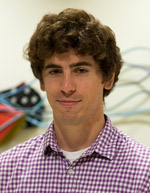
Dr Hua Xia
Australian National University
Identification of Lagrangian coherent structures in two-dimensional turbulence
The transport of quantities such as mass and energy in turbulent flows is an active topic of turbulence research. While the motion of a turbulent fluid can appear to be quite random, the presence of coherent structures, which are patches of fluid that move coherently together, can significantly influence the transport properties of a fluid by acting as transport barriers. However, identifying coherent structures has historically been a difficult problem, requiring large amounts of data and computational power to reconstruct the velocity field, and thus trajectories everywhere, of a turbulent flow. Recently, a new coherent structure identification scheme has been constructed using braid theory to identify coherent structures solely from the trajectories of tracer particles. In a nutshell, the method works by creating an algebraic representation of material loops that are drawn around different sets of particles. Relatively simple algebraic formulas then track the growth of the material loops as the trajectories evolve in time. The length of the material loop encodes the entanglement of the loop with all the other trajectories in the flow, allowing coherent structures to be identified as those material loops that intersect only unique, proper subsets of the set of all tracer particles. The advantage of this scheme is that it does not require knowledge of the velocity field and, due to its algebraic nature, can be implemented in a manner that is orders-of-magnitude faster than traditional methods. This new braid theoretic method, however, has only been applied to well-described numerical examples and not to any real flow. The focus of this project then was quite singular: to apply this new coherent structure identification scheme to a real, physical, two-dimensional turbulent flow and determine its viability as a research tool.
The project revolved around the writing and implementation of an analysis code based on the braid theoretic methods. The first month of the project was devoted to debugging and validating the code through rigorous comparison with previous results, where it was shown that the new analysis code was capable of analysing significantly larger data sets with a three orders-of-magnitude improvement in runtime. As part of this verification process, the statistics of the evolution of random loops encompassing random sets of tracer particles in turbulent flows with different injected energies was investigated. An important goal of turbulence research is to characterise the level of mixing in a turbulent flow, so the growth of randomly initialised material loops (unlike those material loops that are specifically identified to correlate to coherent structures) was taken to be a proxy for the level of mixing of the flow. It was found that the growth rate of the material loops varied as the square root of increasing energy, indicating increased mixing and entanglement, which is consistent with the results from analysis obtained via single particle diffusion. These results were prepared in paper form and submitted to a peer-reviewed journal.
With the analysis code properly benchmarked and functional, the remaining research time was spent using the code's full capability in an attempt to identify coherent structures from tracer particle data in experimental, two-dimensional flows. As this seems to be the first application of the braid theoretic analysis scheme to real, physical trajectory data, we encountered issues that required refinement in order to make proper use of the analysis code. Most notably, due to the nature of real turbulence, any two particles that are initially close to each other will eventually diverge exponentially, even if they start within a coherent structure, which places a limit on the time interval over which identification can be accomplished. It was shown that for a time interval shorter than roughly five Lagrangian autocorrelation times, the natural time scale in the system, numerous coherent structures were readily observed, and they occurred with decreasing frequency for longer time intervals. Given that one autocorrelation time corresponds roughly to the time for particles to decorrelate, the observation that numerous coherent structures existed with lifetimes on the order of four to five autocorrelation times was quite surprising and raised interesting questions for further investigation.
I found my EAPSI research project to be a very worthwhile experience. I learned a great deal from my group and have gained substantial new skills that will benefit me in the future. I hope to follow up as much as possible with some of the questions that were raised during the course of the project, as well as investigate questions involving coherent structures in plasmas that have arisen during my PhD research.
Working with the group at ANU demonstrated quite clearly that the future of science is through international collaboration. This experience has been very beneficial by exposing me to the challenges and rewards of international research and has only served to inspire me to pursue further international research opportunities, Australia included. Without a doubt, it has had a profoundly good impact on the trajectory of my academic career.
The research project that Benjamin undertook at the Australian National University during his EAPSI program was very successful. The project was ambitious and Ben started working on this project even before he arrived to Australia, which gave us all a good head start. Ben demonstrated his exceptional computational skills during this project. He worked hard and achieved remarkable results. Preliminary outcomes promise a novel powerful research tool for identifying coherent structures in chaotic and turbulent flows. The analysis of the data using this tool will continue, focusing on revealing the nature of particle transport in turbulent flows. Overall it was a pleasure to have Ben working in our lab. He worked closely with people here, learned and exchanged new ideas. We are looking forward to future collaborations while Ben builds his successful academic career.
Professor Tim St Pierre
University of Western Australia
Optimisation and investigation of MRI contrast phenomena
Magnetic Resonance Imaging (MRI) is one of the most powerful tools available for biomedical imaging today. This is especially true when paired with contrast enhancement agents. Although today’s Food and Drug Administration (FDA) approved contrast agents are sufficient, they are far from optimal. This project focused on identifying key variables contributing to the contrast enhancement phenomena, and exploiting it to develop efficient, safe, and completely optimised contrast agents. This will allow for both reduction of agent needed and increased accuracy of MRI scans.
Mainly I was running relaxometry measurements on different sized magnetic nanoparticles with different polyethylene oxide (PEO) stabilising ligands on them. When this was done, I reacted a gadolinium chelate with the stabilising ligand effectively yielding a magnetite core gadolinium shell particle. The measurements were then preformed on these particles to compare pure magnetite to the core shell particles. I am still waiting on some of the results to complete my measurement matrix.
Once all of the data is collected (I am waiting on some results) I plan to publish my findings. Hopefully with the research done in Australia I can collaborate with radiologists to create the next generation of safe and effective MRI contrast agents.
Creating/strengthening international collaborations between my home research group at Clemson University and the biophysics group at the University of Western Australia was an important part of the EAPSI program for me. Having these collaborations allows much more freedom in what I can and cannot do when it comes to research. This program opened the door to possible post-doctoral opportunities, as well as informed me how science is done in a country other than the United States.
Ben made excellent progress while he was in our lab. He was a keen and diligent student who was able to work independently as required. The visit gave him access to a unique suite of equipment and allowed him to engage his strong curiosity with the members of our research group. He performed numerous measurements on a large range of samples that will help him better understand some of the fundamental processes that influence MRI contrast agents. Once he has finalised his analyses we expect he will be able to publish the outcomes of his research undertaken in Australia. We found the exchange to be very worthwhile as the students are aware of the limited timeframe and hence they are typically well motivated to achieve.
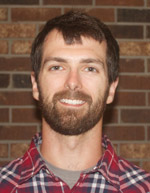
Dr Simon Griffith
Macquarie University
Colour-linked hormonal phenotypes and personalities in the polymorphic Gouldian finch
Recent research in animal behaviour has emphasised the study of animal personalities, suites of correlated behaviours that remain relatively consistent within an individual over time. Patterns of steroid hormone secretion, specifically glucocorticoids, may serve to influence or ‘program’ personalities, and consequently levels often covary with behavioural types, thereby allowing the prediction of individual phenotypes. Relatively rare polymorphic species often exhibit discrete and genetically-determined patterns of hormonal and behavioural phenotypes and, as such, present an exceptional model system to explore the links between steroid hormones and personality. The colour-polymorphic Gouldian finch (Erythrura gouldiae) is characterised by three distinct head-colour morphs. We used the two most common morphs (black and red) to test the effects of social stressors on personality and physiology.
Each individual was subjected to a high stress (4 birds per cage) or low stress (2 birds per cage) social environment and a capture-restraint protocol to test for physiological (corticosterone) responsiveness. Subjects were then put through a series of tests to quantify key behavioural traits, including neophobia (novel object test), aggression (food competition test), and exploratory behaviour (novel arena test). After a recovery period, individuals were tested again in the opposite treatment group.
We currently have well over 100 hours of video to watch and nearly 200 blood samples to test; results are in progress.
The bulk of my dissertation involves field-based studies of avian aggression, personality, and physiology. My EAPSI project provides a useful and more detailed look at these aspects in the lab, as well as a different perspective from the corvids I normally work with. For now, my direction shifts mostly back to field-based studies, but I will return to the lab later in my career where this project will be an invaluable skill set.
As we are still working on finishing my EAPSI project, my host and I will continue to collaborate as we prepare for conference presentations and publication. Additional collaborators at Deakin University are helping us to analyse blood samples and helped to expand my international network in Australia. As I return to the states to finish my PhD, I’ve remained in contact with several researchers regarding funds like Fulbright and the Endeavour Fellowships to return to Australia. I had the opportunity to attend a major conference during the EAPSI program where I met with some European colleagues as well, so my travels to Australia may have helped to open up even more of the world to my research possibilities.

Dr Joanne Evans
Monash University
Construction and reconstruction: Understanding the development of sustainable information infrastructures to support marginalised communities
The long-term preservation of digital information requires sustainable infrastructure. Social and technical elements, including people, organisations, hardware, software, and communication technologies, combine to form infrastructures that support preservation and access to digital information such as research data and personal records. This research seeks to understand the lifecycles and outcomes of digital preservation projects, focusing on projects whose goals included supporting communities experiencing identity, memory, and accountability crises such as children in care. In order to inform future infrastructure development, the goals of this study are to identify those factors that contribute to successful sustainable infrastructure development, to understand the types of challenges that arise in the development process and how those challenges are overcome. This research was conducted in collaboration with Dr Joanne Evans at Monash University in Melbourne, Australia.
This research employs a mixed methods approach, pairing a large-scale survey with in-depth semi-structured interviews and observations. Using a theoretical framework based on theories of infrastructure development this study seeks to understand the outcomes of digital information and research data management projects funded by the Australian National Data Service (ANDS). This study of ANDS-funded projects will be one of the first to look at an entire ecosystem of federally-funded projects, generating baseline data that will provide insight into what factors contribute to successful digital preservation infrastructure development. This NSF EAPSI award is funded in collaboration with the Australian Research Council.
This is a mixed methods study consisting of a large-scale survey and in-depth semi-structured interviews that were carried out across projects funded by ANDS. I spent my time in Australia testing and refining my data collection instruments and carrying out data collection for this study, including conducting 20 in-depth interviews and launching the survey, which closed at the end of September 2015 (response rate as of 15 September 2015: 22%).
I was also able to give a conference presentation about my EAPSI project, deliver two invited presentations, and meet with colleagues at a number of local organisations.
The EAPSI program was particularly beneficial for this particular project because Australia has a strong public records infrastructure, making this site an ideal location to begin an examination of the lifecycle of nationally-funded data preservation projects. Findings from this project could inform the development and study of recordkeeping infrastructures in the United States, where recordkeeping systems lack the centralisation and/or standardisation that characterises Australian infrastructure.
The EAPSI program has allowed me to both strengthen existing relationships, and also to build new relationships with researchers in my field in Australia. It is my hope that this project will represent the first of many collaborations with my Australian mentors and colleagues.
Rebecca's visit was an interesting and rewarding experience for the Records Continuum Research Group (RCRG), and it was a pleasure to be her host. Her visit facilitated a number of opportunities for discussion of research issues with colleagues in research, library, archives and data management areas at Monash University, the University of Melbourne and elsewhere, which are useful for evolving the R&D agenda of the Group. Rebecca is an impressive researcher and made excellent progress on the research project. She undertook a number of interviews and the willingness with which people consented to participate is testament to her thoughtful and thorough approach. It has been a most beneficial international collaboration, in terms of the research project itself (i.e. studying the research data issues with an inherent international perspective enriched the data collection process), the potential for further collaborations on this research topic and strengthening of links within the Archival Education and Research Initiative community.
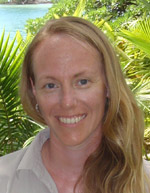
Dr Jennifer Lavers
University of Tasmania
Pesticides and breeding failure: Investigating the link using a poorly-studied Australian seabird
Seabirds are bioindicators of many processes in the marine environment because they are top predators that forage in pelagic and coastal habitats, thereby sampling a large area of ocean. I am using seabirds to study contaminants in the ocean. There were two major components of this research project: 1) Collect life-history data of a seabird that breeds in Western Australia, the little-studied Great-winged Petrel (Pterodroma macroptera); and 2) Examine the relationships of organochlorine pesticides (OCPs), foraging ecology, and breeding hormones in the Great-winged Petrel by: a) evaluating OCP and concurrent hormone concentrations (of the hormone Prolactin) in relation to diet and regional foraging habitats; and b) determining foraging habitat characteristics.
I collected blood samples from Great-winged Petrels in Western Australia. These samples are currently being analysed at RMIT University in Victoria to determine the amount of OCP in the Petrels’ blood. These samples are also currently being analysed for an avian breeding hormone, Prolactin, in collaboration with a researcher in France. Together, these results will help my collaborators and me to understand the relationship between environmental contaminants like OCPs and their effect on an important aspect of breeding in seabirds, the secretion of the Prolactin hormone.
I also deployed global positioning system (GPS) tags on Great-winged Petrels to determine where in the ocean they go to find food, and what oceanographic features Petrels use to find these areas. I learned that Petrels travel several hundred kilometres to find food and likely use bathymetric features like seamounts to locate areas of prey congregation.
My project took place in several locations over the course of the eight-week EAPSI program. This project design enabled me to meet many people with whom I shared my research and also from whom I learned a lot of valuable information about Great-winged Petrels’ ecology and developed skills about employing OCP analysis methods. I think that these opportunities made my EAPSI experience especially meaningful. This research will form the basis of one of my dissertation chapters, thus helping me to complete my PhD on schedule. This research also helped to form additional collaborative opportunities that will include publications in the near-future.
Participating in the EAPSI program was a really incredible experience. I collaborated with several researchers in addition to my host- an opportunity that provided me with a more enriched research experience and a chance to exchange ideas. These experiences will complement my previous research experiences and curriculum vitae and greatly benefit my career goals to conduct ecological research at the international level. I’m looking forward to completing the analyses from my research and sharing the results with my collaborators from this project and with collaborators on related research projects for my dissertation in the US and Mexico.
I thank EAPSI for providing Morgan with the unique and valuable opportunity to travel to Australia to participate in this research program. Morgan is an exceptionally hard-working and well-organised student, who greatly impressed me, as well as my colleagues she collaborated with. The data generated through this project will contribute greatly to our understanding of this much-forgotten species (of which we know almost nothing about) as well as to improving our understanding of how POPs are affecting the world’s oceans. Bringing together a diversity of community, academic, and government-based collaborators spanning four countries is no small task, but has been very productive, rewarding, and exciting.

Professor Joseph Holtum
James Cook University
Phylogenetic resolution and the evolution of CAM photosynthesis within Australian Calandrinia
Phylogenies have transformed how we study character evolution. By mapping character traits across the tips of a phylogeny we can use inference methods to reconstruct ancestral character states and gain insight into the evolutionary history and assembly of complex character syndromes such as Crassulacean Acid Metabolisms (CAM) photosynthesis. Australian Calandrinia is an ideal lineage in which to investigate CAM evolution, as species within this group are known to span the C3 to CAM photosynthetic spectrum. The aim of this study is to 1) resolve the phylogenetic relationships within this genus and its relationship to American Calandrinia and 2) to characterise photosynthesis type used by each species. Then using phylogenetic comparative methods, I aim to untangle the evolutionary ‘position’ of the CAM-intermediate phenotypes, CAM-cycling and Facultative CAM, along the CAM evolutionary trajectory.
The research I set out to do this summer is ongoing as the plants I work with were not big enough at the end of the program to run all of the experimental parameters. I am growing 30 species of Calandrinia in the James Cook University shadehouse. We are currently running a well-watered, drought, re-watered experiment across 10 individuals (five control, five experimental) for 30 different Calandrinia species. We are measuring the day/night leaf acidity of five leaves across all 10 plants for each species when plants are well-watered, droughted, and re-watered. In addition, leaf gas-exchange is being measured for each species over all experimental conditions using multiple Licor-6400s. In addition to the Calandrinia species, we are growing and performing the same experiment on closely related, known C3 and constitutive CAM.
Although I was unable to complete the experimental portion of my research proposal, I had a very successful collecting trip in Western Australia. In collaboration with Kevin Thiele (the Director of the WA Herbarium) and Frank Obbens (Botanist at the WA Herbarium), I conducted a two-week field campaign through Western Australia, starting in Perth and making our way north through the Murchison to the Pilbara, stopping in Port Hedland and Karratha before making our way south back to Perth. Along the way we collected 19 different species of Calandrinia and multiple populations of many of these species. If plants were in flower, seeds were collected and shipped back to James Cook University to grow in the shadehouse for further physiological and genotypic analysis.
After the completion of this field campaign, we now have complete taxonomic sampling of the genus Calandrinia. I am currently working on the first phylogeny for the genus and these data will hopefully be available by the end of December.
Working in collaboration with Joseph Holtum at James Cook University has made this research project possible. With his assistance (time, facilities, equipment), we started a large growing/CAM expression project at the JCU shadehouse. Although not everything was big enough in the end to measure photosynthesis expression we made a lot of progress on getting such a project underway. I feel great about the research project and am excited to see how things work out in the future. This project will end up being a critical component to my dissertation objective, to understand the evolution of CAM photosynthesis.
This program provided an invaluable experience. I feel incredibly grateful for the opportunity to spend time in Australia working with experts in the field. Over the past year I have connected with herbaria and researchers across Australia in efforts to collect plant specimens from the genus Calandrinia. These partnerships have been crucial to my success and I hope to keep these working relationships in the future. I have learned so much about organising a field campaign, traveling in a foreign country, and about how to be a productive field biologist.
Ms Lillian Hancock was the first EAPSI Fellow my laboratory has supported. She was a delight to host and her visit was most profitable to all concerned. She exhibited an excellent work ethic, a fine intellect, admirable communication skills and seamlessly fitted in with staff and students. I believe her Australian experience in the field and the lab enriched her scientific and world views. She certainly advanced our understanding of plant phylogenetics and its most modern techniques.
During her visit, whilst in Canberra, Lillian met with the doyen of the evolution of the Australian flora, Professor Michael Crisp, and with the authority on the taxonomy of Australian succulent flora, Professor Judy West. In collaboration with the WA Herbarium, Lillian undertook a 4,000 km collecting expedition in inland Western Australia and the Pilbara. The DNA samples of Calandrinia collected in the field, coupled with DNA sampled from the WA Herbarium collection, will undoubtedly result in the first phylogeny of the Australian Calandrinia, the most advanced phylogeny of the global Montiaceae, and an understanding of the forces that shaped the evolution of succulent plants in Australia and perhaps elsewhere. Whole plants collected by her and transported to JCU are forming the basis of physiological investigations into the prevalence of the water-use efficient mode of photosynthesis, crassulacean acid metabolism (CAM), in the Australian flora. Lillian initiated gas-exchange studies on these plants grown under controlled conditions and set-up a sampling experiment. Both studies will continue well into 2016 and perhaps 2017. I predict at least three research publications from this visit. In addition, we have been invited to write a review on CAM in the Australian flora for a special edition of New Phytologist, a prestigious international journal. Lillian’s visit has created a strong link between research programs at Brown University and James Cook University, and I predict that Lillian’s exposure to the results of evolution on the American and Australian continents will further the career of a promising young scientist.
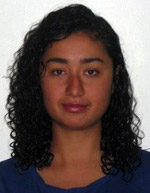
Professor Yuri Kivshar
Australian National University
Effects of symmetry on scattering of polarised light in 2D periodic optical metamaterials
Metamaterials consist of nanostructures whose shape and spatial arrangement are engineered to yield specific optical properties. We focus on dielectric nanoparticles with a high refractive index, which offer an attractive lower-loss alternative to metallic metamaterials. Our aim is to first understand scattering from a single dielectric nanoparticle lacking rotational symmetry, and then consider periodic arrays of such nanostructures.
Research activities included learning to use software for numerical simulation of electromagnetic fields and scattering, and developing a theoretical model of resonances in low-symmetry dielectric nanoparticles with high-refractive index.
Numerical simulations and analytical models of resonances in single silicon rectangular nanoparticles have improved our understanding of their scattering mechanisms. We continue to work on the theory and will then proceed on to more complex nanoparticle geometries.
Frequent discussions with members of the Nonlinear Physics Centre at ANU were very helpful and intellectually stimulating. I am fortunate to have been able to conduct research there and will continue work on this project under supervision of my Australian research advisors.
Sarah is an excellent student with a strong desire to learn new things. She has started here to work on a topic entirely new for her, the analysis of optical properties of nanoparticles, and she made a rapid and solid progress in a very short time. I do believe the results will be completed and they will be summarised in a research paper.
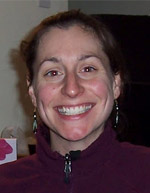
Dr William Foley
Australian National University
Investigating the impact of ambient temperature on liver function in a mammalian herbivore
For mammalian herbivores, there is growing evidence that ambient temperature may interact directly with plant toxins in such a way that the toxicity of plant defence compounds is amplified at warmer temperatures. This phenomenon is known as temperature-dependent toxicity (TDT) and is due to how the mammal physiologically perceives the plant toxins at different ambient temperatures. More specifically, mammals demonstrate reduced liver function at warmer temperatures, which appears to result in a decreased tolerance for plant toxins. I have been investigating TDT in a desert rodent from the southwestern United States for my PhD thesis. The objective for my EAPSI research project was to further this investigation of TDT to include a different taxonomic group of mammalian herbivores, which differ greatly in body size and dietary plant toxins. Our hypothesis was that warmer ambient temperatures will result in reduced liver function in the common brushtail possum (Trichosurus vulpecula).
We determined the liver function of possums using hypnotic state assays at three ambient temperatures in a laboratory setting at ANU. Hypnotic state assays are a validated method of whole-organism liver function and are non-destructive, which allows for multiple measurements per individual. Alfaxan was used as the hypnotic agent because it is a good proxy compound for plant toxins (i.e., broken down in the same pathway as plant toxins). Possums (N=11) were housed at three ambient temperatures (10, 18, and 26°C; random order) for at least seven days, after which Alfaxan was administered. The length of time required for a possum to right itself from a hypnotic state (i.e., started lying on its back) was recorded and used a proxy for drug clearance time. We found that our hypothesis was correct – possums housed at 26°C had longer clearance times, indicating reduced overall liver function, compared to possums housed at 10 and 18°C.
It was exciting to be part of a research project directly related to the work I had already conducted. To me, this project represents a nice “cherry on top” finding for my PhD thesis and it was an amazing opportunity to be part of the experimental process. Furthermore, it was rewarding to share my knowledge and experiences to welcoming collaborators.
International collaborations in research can be extremely important, especially when experts in your field of study reside in different countries! This was the case for me, as a student interested in the field of plant-mammal interactions. Through EAPSI, I was able to meet and discuss research topics (both mine and others!) with multiple experts in this scientific field. It was an amazing opportunity that I’m not sure I would have ever received without EAPSI. Living and working in another country also provided me with much need perspective about possible career opportunities. And again, these conversations would likely have never happened without EAPSI.
Patrice was hard working, a great team player and contributed to the lab academically and socially. Through her good planning and excellent research skills, Patrice was able to complete a significant experiment in a very short period of time. Her energy and attitude to research was a positive inspiration for other students in the lab. Patrice’s communication skills are excellent and her approach to research is strategic, balanced and ethical.
We hope that Patrice’s visit is not her last and that this successful collaboration will provide further opportunities for exchange of students between University of Utah and the Australian National University. The EAPSI program is well conceived and exchanges like this are hugely influential in getting students to see science as an international collaborative endeavour and to think about the bigger questions that their research uncovers.

Dr Michael Mahony
University of Newcastle
Does colour matter? Effects of toxin biosynthesis on the evolution of Polytypism and Aposematism in Australian Brood Frogs (genus Pseudophryne)
Polytypism, among-population variability in colour form, in aposematic species defies the expectations of classic evolutionary theory. Aposematic colouration is a defensive strategy employed by a wide variety of species in which potential predators are warned of the risk associated with prey upon them, thereby reducing the threat of injury. As many predators have limited capacity to discriminate among aposematic phenotypes, selection should homogenise aposematic signal. However, a number of species are known to display among-population variability in aposematic signals. Previous studies have found that among-population variability in toxicity (e.g., toxin potency) varies when species derive their toxicity from dietary items. This variation is hypothesised to lead to variation in signal, as colour signal may honestly reflect potential harm (e.g., brighter colour corresponds with higher toxicity). In contrast, species that do not rely on diet for toxicity by synthesising their own toxins (biosynthesisers) would not be expected to vary among populations. Therefore, the risk to predators should be the same regardless of colour signal. However, there are no studies that examine evolution of aposematic polytypism in species that synthesise their own toxins, likely due to the rarity of polytypism in aposematic biosynthesisers. Similarly, toxicity data on polytypic biosynthesisers are limited. The Australian frog genus, Pseudophryne, displays among-population variability in colour signal and has been hypothesised to be the only frog genus known of producing its own alkaloid neurotoxins, making the genus ideal to test hypotheses regarding the evolution of polytypic aposematic coloration. To understand the evolutionary dynamics of aposematic biosynthesisers, it is crucial to understand how predator perceptions of signal have likely driven historical evolution of aposematism. To explore the evolution of aposematism in Pseudophryne, I empirically tested dorsal and ventral coloration of Pseudophryne species in two locations in order to determine what predators prefer and avoid. This will allow me to determine how predators select for conspicuous coloration in this genus.
For this project, I created 2,000 models of each of eight phenotypes (five dorsal - brown, flash marks, yellow head, orange head, and corroboree and three ventral – reticulated, black, and white) for 250 models of each phenotype. I placed 2,000 models on 6km of transects in Croajingolong National Park in Victoria. Transects were left for three days before being collected and predation assessed. Of the 2,000 models that were left, only six were depredated, which is a 0.03% attack rate.
I placed 1,566 models in Watagans National Park in New South Wales. Given the results from Croajingolong, depredated models were collected after three days, with the rest being left for an additional four days. After three days, 44 models had been depredated, representing 2.8% attack rate. After a week, an additional 34 models were attacked for a total of 78 models being attacked (4.9% attack rate).
The methodology for assessing predator preferences may need to be refined in order to get higher attack rates and higher statistical power. While frogs are not incredibly active during the winter, there are some still active, and predators (i.e., lyrebirds, brush turkeys, and brush-tailed possums) were certainly active. The lower attack rate may be due to an actual low predation rate on the frogs in the wild.
The importance of collaboration will be critical in answering future questions about these systems. Admittedly, winter is not the best time to be researching these frogs, and while my experiments were successful, there are a number of future experiments that I would like to see completed including examining toxin biosynthesis and controlled predator experiments.
This research allowed me to extend my collaborative network not only to include those from the University of Newcastle, but also researchers from other areas in Australia that are interested in working on colour evolution. The experiences from this program will be long-lasting as I develop projects and collaborative relationships on into the future.
The research collaboration and hosting arrangements worked very well, and provided a valuable means to establish working relationships with research departments and laboratory’s at universities in the US. This is an effective means to establish international collaborations and partnerships.
The research collaboration established provided an important development for investigating hypotheses in evolutionary ecology. This study provided the opportunity to investigate the evolution of predator avoidance mechanism mediated by poison glands on the skin of the prey item and the need to advertise this capacity to the predator via aposematic colouration of the skin. The first step was to confirm that the aposematic colouration does act as a flag to warn potential predators that the prey item is toxic. It was also important to understand the range of predators that are involved in terrestrial leaf litter communities in Australia. Many questions follow from these first experiments; such as how toxic the skin secretions are and whether frog species with stronger aposematic patterns are more toxic, or whether the colour may not always be an honest signal; it is also important to verify whether the toxins are endogenous or derived from the environment, and if they are endogenous how this may vary within and among populations.
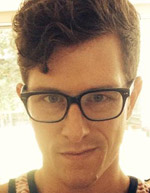
Professor Gillian Rhodes
University of Western Australia
Understanding how and why visual exposure reduces prejudice
Human perception is malleable, such that brief exposure to a stimulus feature (adaptation) alters the perception of subsequent stimuli (aftereffects). Classic research on this topic examined adaptation to low-level cues, such as colour and motion (Blakemore & Campbell, 1969; McCullough, 1965). More contemporary research extended these observations to higher-level cues, revealing that vision also adapts to features in the human face (Leopold et al., 2001; Webster et al., 2004). Most recently, researchers began probing the social evaluative consequences of these effects, showing that adaptation elicits more favourable evaluative judgments of targets who share features with adapting stimuli (Lick & Johnson, 2014a; Principe & Langlois, 2012; Rhodes et al., 2003).
Although several studies have documented social evaluative consequences of visual adaptation, the mechanisms underlying these effects remain poorly specified. One explanation is that adaptation causes features to appear increasingly normative, and perceivers tend to prefer normative exemplars to more extreme exemplars of a given category (Gordon & Holyoak, 1986; Halberstadt & Rhodes, 2000). But why do normative features arouse favourable evaluations? Perceptual fluency offers one possible answer. Broadly defined, fluency describes the ease with which perceivers identify salient features of a stimulus, with fluent processing marked by swift and seamless progress toward judgment (Alter & Oppenheimer, 2009). Critically, fluency is associated with social evaluative judgments, such that targets processed fluently tend to receive more favourable evaluations than targets processed disfluently (Lick & Johnson, 2014b). In light of these observations, I propose that fluency may offer a proximal explanation for previously established links between visual adaptation and social evaluation.
My EAPSI project tested this hypothesis about perceptual fluency as a mechanism by which visual adaptation enhances social evaluations specifically with regard to gendered facial features. Especially for women, gender-atypical (masculine) phenotypes tend to be evaluated negatively (Horn, 2007; Perrett, May, & Yoshikawa, 1994). However, this bias is malleable on the basis of visual exposure: Adaptation to masculine female faces significantly enhances social evaluations of masculine women (Lick & Johnson, 2014b). On the basis of these findings, my primary hypothesis was that adaptation enhances evaluations of masculine women by improving the fluency with which perceivers process masculine women in terms of their sex category membership.
I ran a large laboratory study (N = 281) to test whether perceptual fluency helps to explain why visual exposure enhances evaluations of gender-atypical women. I first created test stimuli using FaceGen morphing software. Pretest stimuli were computer-generated faces of six women and six men who varied in their gendered appearance along a five-point continuum from very masculine to very feminine. Half of the faces were presented under fluent viewing conditions (no alteration to image quality) while the other half were presented under disfluent viewing conditions (addition of a three-pixel Gaussian blur). During the study, participants viewed each of the pretest faces in random order and evaluated them in three counterbalanced blocks – once to rate their overall likeability (1 = not at all likeable to 9 = extremely likeable), once to rate their gendered appearance (1 = masculine to 9 = feminine), and once to categorise their sex (male, female). After completing pretest judgments, participants underwent a visual adaptation in which they viewed 15 hyper-masculine female faces that differed from those in the pretest phase. The adaptation images were repeatedly displayed in random order for three seconds each for a total of three minutes. Following adaptation, participants completed posttest evaluations similar to pretest but with different stimuli. Moreover, posttest evaluations included a top-up adaptation (one adapting face presented for three seconds) before every test face to ensure that adaptation effects continued throughout the posttest period.
Although ongoing, I completed preliminary data analyses using multilevel regression models that account for nested data. I conducted the first set of analyses only among gender-atypical (masculine) female targets that were presented fluently, as these were the targets of primary theoretical interest. As expected, adaptation to gender-atypical female faces improved both likeability ratings and the fluency with which participants categorised the sex of other gender-atypical women (measured in terms of response latency). I then conducted a second set of analyses linking the change in evaluations to the experimental manipulation of fluency (i.e., addition of blur to the test images). At pretest, participants evaluated the disfluent faces less favourably than the fluent faces. At posttest, this bias was nearly twice as strong. The logic for these findings is as follows: Disrupting fluency by adding visual noise reduces liking. The disfluency effect was exacerbated after adaptation due to an increase in the fluency of processing the un-manipulated images. That is, adaptation to masculine female faces increased the fluency with which perceivers processed the un-manipulated images of masculine women, but the addition of disfluency via visual noise should reduce this fluency and therefore reduce overall liking to a greater degree at posttest relative to pretest. These findings provide experimental evidence to buttress the conclusion that visual adaptation improves social evaluations by enhancing perceptual fluency.
Thus, with the help of Dr Rhodes and her lab group, I conceptualised, programmed, conducted, and analysed the data from a large laboratory study during my time in the EAPSI program. The results matched my predictions and provided preliminary evidence that perceptual fluency acts as a mechanism by which visual adaptation enhances social evaluations.
This project provided numerous insights for me personally and for the broader scientific literatures on visual adaptation and perceptual fluency. Personally, I gained research experience working with international experts on visual adaptation. They helped refine my theoretical knowledge and taught me new methodological skills that will be useful in future projects (e.g., face morphing, fitting psychometric functions). I also collected a relatively large dataset that I will be able to write up for publication and conference presentation this fall. In terms of scientific knowledge, my project provides empirical evidence for perceptual fluency as a mechanism by which visual adaptation enhances social evaluations. As such, it provides new information relevant to social psychological theories of impression formation and cognitive psychological theories of visual adaptation. Beyond basic science, evidence that visual adaptation enhances evaluations of stigmatised social groups by increasing perceptual fluency may aid in the development of cost-effective interventions. Applied researchers might now consider how we can increase perceptual fluency on a broad scale in order to reduce the widespread prevalence and harmful consequences of prejudice.
Beyond my specific project outcomes, the EAPSI program afforded many opportunities for growth. As mentioned above, I was able to collaborate with multiple experts in face perception and visual adaptation during my time at the University of Western Australia. Their feedback was especially valuable because they are trained in cognitive psychology whereas I am trained in social psychology. Talking across disciplinary boundaries highlighted assumptions in my arguments and taught me how to best present my work to a broad audience, both of which will be useful in the coming years as I enter the academic job market. More practically, working in Dr Rhodes’ lab taught me skills that I will use in future studies. For example, I learned new face morphing and statistical techniques that I have already put to use in ongoing research. All of these aspects of my EAPSI experience – interdisciplinary collaboration, insightful feedback, and news skills – have made me a better scholar. I am thankful for the experience, and I very much look forward to pursuing additional research opportunities with Dr Rhodes and her lab in the future.
David’s visit was a hugely enjoyable and productive experience, not only for myself but also for my broader lab group. David engaged enthusiastically with the students and post-docs, giving presentations on his own research as well as tutorials on online data acquisition methods, which should prove a valuable addition to their skill set, and p-hacking issues. He also engaged in many informal, day-to-day research discussions and brain-storming sessions in the lab, which were enjoyable and stimulating for all.
Our collaborative research project was extremely challenging, and an extended period of discussion and refinement was needed to find a design that would unambiguously determine whether adaptation increases liking by increasing perceptual fluency. We believe that we found a good design, and the challenge was then to recruit a large sample in a short time. David was able to do so by liaising with two colleagues who ran teaching labs for our undergraduate perception course. As a result of access to run his study in the labs, David had to provide materials for the tutors and deal with the organisation issues that arise with running large teaching labs. He did all of this with great efficiency, and hopefully the experience will be useful when he has a faculty position. The preliminary analyses of our findings look very promising, as David explained above, and we hope to submit them to the Journal of Experimental Psychology: General, which is a highly ranked journal.
Overall, the visit exceeded all expectations. In addition to completing a challenging research project, David also provided an inspiring role model for PhD students in our research group. We have nominated David as an Associate Researcher in our Australian Research Council Centre of Excellence in Cognition and its Disorders, and hope to maintain our research collaboration.

Professor Matt Wand
University of Technology, Sydney
Statistical methodology for estimating health effects of exposures to complex metal mixtures, with a focus on identifying time Windows of susceptibility to exposures
My research is at the intersection of statistics and public health; I am developing new statistical methodology to study environmental health research questions. This summer, I developed a Bayesian hierarchical model with penalisation using variational approximation for Bayesian inference. This model is used to study how exposures to complex mixtures of metals affects neurodevelopment in children, and identify critical time windows of exposure to mixtures. By using variational Bayes, I was able to greatly increase the computational efficiency of the model as compared with traditional Markov Chain Monte Carlo methods for Bayesian inference. The model is applied to an ongoing prospective cohort study in Mexico, and is used to elucidate information on the complex interaction of chemical mixture components and gain insight in toxicity. In the existing environmental health literature, the majority of studies study the health effects of a single toxicant, or research health effects of exposure mixtures at a single time point. However, because of sequential neurodevelopmental processes in early childhood, the timing of exposure is very important for identifying health effects. There is a lack of statistical methodology for studying the time-varying health effects of metal mixtures. Therefore, the methodology I developed this summer fills this gap - I aimed to develop a computationally fast model to study this research question; by implementing variational Bayes in this model, the model is able to efficiently handle large datasets, such as many subjects or time windows of exposure.
During the EAPSI program, I developed the theory and methods for the model through mathematical derivations. I also implemented code using the statistical software R, and am currently tuning my model and conducting simulations. The research is still ongoing; it will be part of my dissertation and will become a research paper.
It was really interesting to learn about a new statistical model called variational approximation for Bayesian inference, which is increasingly important for handling big data. This method is widely applicable to research questions and I plan to use it in my future work.
The EAPSI program was a very enriching experience. I was able to learn more about a career in academia, as it was helpful to propose a research project and learn how to apply for a grant. The EAPSI program showed me that international collaborations are a vital part of science, and I left Australia inspired to look into postdoctoral opportunities after my PhD. It was also very insightful to meet faculty members and students, and learn from the other EAPSI participants.
Ms Liu was an active participant in our research group during her visit and completed a substantial amount of joint research with host Professor Matt Wand. At least one doctoral thesis chapter will come out of this work.

Dr Daniel Tan
The University of Sydney
Determining the feedstock production cost of agave in Australia for biofuel production
Agave is a drought tolerant species, rich in sugar, that thrives on marginal lands of arid and semi-arid regions. With rain-deficient landscape covering a third of the global land mass, agave may be the ideal energy crop that could facilitate the creation of a greener and sustainable bioenergy future for the global population. To evaluate its potential as a biorefinery feedstock candidate, it is important to conduct techno-economic analysis. However, one of the key components driving techno-economic analysis of a process converting biomass to biofuel is the feedstock cost. According to one National Renewable Energy Lab study of the biochemical conversion of corn stover to bioethanol, feedstock cost can constitute as much as 35% of the operating expenses of a bioethanol plant. Given its sizable impact on the bottom line of a biorefinery, it is important to utilise data derived from actual field trials of agave to assess feedstock cost. Currently, Australia is one of the few countries that is significantly investing in agave as an energy crop. The objective of this project is to assess the agave feedstock production cost based on field trials in Australia as a first step towards determining its potential as a biorefinery candidate.
The activities consisted of two parts: (a) gathering actual data from the field trial in Kalamia Estate and (b) scaling it to reflect commercial production and practices following the completion of part (a). For part (a), it was important to identify the types of data to collect and the people to contact. I read a lot of literature and conducted many phone interviews to document the activities taking place at Kalamia Estate, Queensland, which is the site of the agave field trial. Following these interviews, forms were prepared to document and characterise the activities (e.g., their frequencies, the materials and machineries utilised, and their fixed and operating expenses). Further phone interviews were conducted and I exchanged many emails to identify the productivity of agave, as feedstock cost is generally expressed in $/dry ton of biomass. Tracking down the weights of the agave plant through its growth years and calculating the yields from the compositional analysis of the plant sugar content were conducted to identify the productivity of the plant.
Since all these efforts from activity costing to compositional analysis were performed by students and volunteers, the outcome of the feedstock costing at Kalamia Estate is unresolved and the process is ongoing. I am awaiting data from those directly in charge of the agave farm and those performing the compositional analysis of the plant. Upon completion of part (a), the commercial version of agave production would be identified through the effort of those responsible for managing the agave field trial. However, since part (a) is not complete, part (b) has not been implemented.
The scope of the project has changed from the original proposed work. The original proposed work consisted of 50% feedstock assessment and 50% technoeconomic analysis using the feedstock cost data. I had to alter my research direction to avoid duplicating another person’s effort on agave feedstock costing based on the same field trial in Kalamia Estate. In my revised proposal, with the approval of my host professor, I included field trial cost assessment in addition to a more complete commercial scale feedstock analysis. The latter portion would build upon work that has already been performed. Due to the additional work and challenges in documenting the ins-and-outs of agave cultivation and establishment at Kalamia Estate, the scope of the work was revised to focus solely on feedstock cost assessment. No techno-economic analysis was performed during my time at the University of Sydney.
Though the project scope has changed, I am still grateful for having the privilege of working with my host researcher Dr Daniel Tan of the University of Sydney, who has been very supportive and understanding of the challenges I faced. As a result of the emphasis on feedstock costing, I had the opportunity to explore agave agronomy and broaden my understanding of the challenges in commercialising agave at the farm level. Given my interest in commercialising agave in California, I find such knowledge to be invaluable.
I have learned so much regarding agave’s potential during my short stay at the University of Sydney that I would not think twice about collaborative endeavours involving other institutions. The whole journey has been very rewarding and gratifying intellectually as it is has provided me with an opportunity to see agave from a fresh perspective: that of a farmer. This will better equip me to anticipate the challenges of farming marginal lands in California when opportunities for commercialisation arise.
May-Ling is a very intelligent and enthusiastic student. While in Australia, she did a remarkable job collating information on agave feedstock costs for her technoeconomic analysis. This was a particularly challenging task as she had to interview various stakeholders to retrieve legacy production operations, processes and costs that were not particularly well documented. The stakeholders included an agave entrepreneur, a farm manager as well as a bioenergy research group based at the University of Adelaide. May-Ling meticulously organised template spreadsheets and arranged for the relevant stakeholders to supply the appropriate information to populate her agave feedstock cost model which will eventually be used for her technoeconomic analysis. May-Ling also visited the agave farm at Kalamia Estate, Ayr in North Queensland to collect field data as well as to discuss with the relevant stakeholders. She is an exceptional researcher able to work and succeed under very challenging conditions. I am extremely pleased with the quality of her work and wish her all the best in the timely completion of her PhD dissertation.

Professor Alan Bond
Monash University
Large amplitude Fourier transform alternating current voltammetry to study electrical double layer transition from aqueous to ionic
The aim of my EAPSI proposal was to probe the interfacial region between an electrode surface and an adjacent fluid, a region known as the electrical double layer. This work was done in ionic liquids, where the interfacial structure has been the topic of much debate. The technique used to perform my experiments was large amplitude Fourier transformed alternating current voltammetry and provides a novel approach to analyse the electrical double layer. My research objectives were to study the pure ionic liquids and the effect of water on the double layer region. I would accomplish these objectives by systematically varying the mole fraction of water in the ionic liquids and study the resulting capacitance response.
Much of my work at Monash University involved experimentation using the Fourier Transform AC Voltammetry (FTACV) instrument. There was a simulation portion to my project but that can be done anywhere with my laptop computer. So the idea was to undertake as many experiments as possible during my visit. Over the course of 12 weeks, I collected data on several different variables pertinent to my system of interest. Although I was unable to reach the water studies, my experimentation in the pure ionic liquids will provide useful information to the scientific community with regards to the electrical double layer. Future work will involve fitting my data to current theoretical models that describe electrical double layer behaviour.
In writing my proposal, the timeline I anticipated seemed very reasonable. However, as I soon found out, my proposal was quite ambitious. I was able to fully complete experimentation on the pure ionic liquids, which will provide the needed background information to begin to understand the double layer region. I learned a great deal about ionic liquid electrochemistry and it will be useful for ongoing studies at Iowa.
International collaboration and the sharing of knowledge is key to allow an understanding of research questions and objectives. Being a part of the EAPSI program has solidified the importance of networking and establishing professional relationships with colleagues from around the world. I believe that my time and efforts at Monash University have built a platform for future collaboration, communication, and mentorship.
Anthony Lucio’s visit to the Monash University Electrochemistry Group has been extremely successful both scientifically and culturally. The project was well defined in the Fellowship application, but ambitious and made extensive use of in house built equipment that is virtually only available at Monash University.
Early on in his visit, Anthony gave a seminar to our group which gave us an introduction to his life in the USA in Iowa along with details of the science he is undertaking for his PhD in the USA. This allowed the Monash Group to immediately relate to Anthony’s background and experiences and exchange ideas with him at both scientific and cultural levels.
It was obvious from a very early stage of his visit that Anthony has an outgoing personality and could quickly adapt to his new surroundings in Australia. It was also apparent that he has an inquisitive mind and was prepared to try the new techniques we have available and implement them successfully into his ionic liquid based project.
During his time at Monash University, Anthony Lucio worked exceptionally hard in the laboratory, but also showed a keen interest in learning about life in Australia. He also interacted very well with other postgraduate students in the Electrochemistry Group and this has led to technology and scientific exchange at the high level hoped for in an International student collaboration program of this kind.
By the end of the visit, Anthony had collected vast amounts of high quality and interesting data. We provided the software tools to assist in analysis of the data which can be undertaken in Iowa and hence allow the project to be completed by undertaking theory versus experiment comparisons.
In summary, it has been a great pleasure to host the visit of Anthony Lucio at Monash University. I was a recipient of a Fulbright Fellowship at an early stage in my career and this provided a magnificent experience that one remembers fondly for the rest of one’s life. I believe the benefit of Anthony’s visit to Australia will prove beneficial in the short term with respect to his PhD, but also long term as he now has an appreciation of Australian life from a firsthand knowledge base. I have no doubt collaboration will continue for some time and that technology transfer and exchanges of ideas will benefit the science at both our institutions for several years to come.

Professor Michael Brear
The University of Melbourne
Using tomographic reconstruction of liquid-phase extinction measurements to assess fuel spray breakup outcomes in internal combustion engines
Atomisation and fuel spray processes are known to largely impact combustion and emissions formation in direct injection engines. In order to accelerate the development of clean-combusting and fuel-efficient combustion technologies, physically-based and predictive spray models must be developed. In this project, we planned to assess the physical mechanism by which a liquid fuel spray breaks up into smaller droplets under engine-relevant conditions by comparing computational fluid dynamics (CFD) model predictions of spray breakup outcomes, such as droplet size and number density, with quantitative spray measurements. The proposed work will foster current and future collaboration with Dr Michael Brear’s Thermodynamics Laboratory at the University of Melbourne, Australia. Dr Brear’s lab was uniquely positioned to collaborate with us on this proposal as it specialises in combustion diagnostics and has applied tomographic reconstruction to optical emission measurements of laminar flames.
The goal of the proposed work was to assess the relative importance of hydrodynamic instabilities and liquid turbulence on the breakup of a liquid fuel spray in direct injection internal combustion engines using quantitative spray measurements. It was hypothesised that under in-cylinder conditions at full compression, aerodynamically-induced instabilities govern spray breakup and subsequent droplet sizes. However, for early or late injections, we expected liquid turbulence-induced breakup to play a more dominant role in spray breakup and droplet formation. Previously, CFD spray simulations were employed to evaluate and compare the predicted spray morphology for each of these spray breakup mechanisms in isolation. A measurement that can quantify spray breakup outcomes, such as joint distributions of droplet size and number density, is therefore needed to assess the physical validity of these breakup theories. It has been shown in previous work that there is a direct correlation between predictions in liquid-phase laser extinction and spray morphology, and I have demonstrated that this measurement technique shows promise of assessing primary spray breakup models. In this proposal, tomographic reconstruction to 2-D laser extinction measurements will be employed to yield 3-D spatial information regarding local spray structure and asymmetry for robust model validation.
The application of tomography to spray measurements shows promise of deepening our understanding of spray structure under engine-relevant conditions. Such a methodology would be valuable to extend to sprays in other industries, such as the biomedical field. This is a research area I hope to delve into in the future.
Collaboration between University of Melbourne and Georgia Institute of Technology has resulted in new and interesting findings in spray research. This process has allowed me to see the value in international collaboration. It allows for the extension of current ideas and the generation of new ones by integrating different areas of expertise and ways of thinking. I look forward to continuing our relationship with the University of Melbourne and creating new relationships as I continue in my career as a researcher.
Ms Magnotti was a pleasure to host throughout her time at the University of Melbourne, and the work that she undertook with us has formalised a collaboration between Georgia Tech and ourselves. This was something that Ms Magnotti’s advisor, Dr Caroline Genzale, and myself had planned to do for some time. Ms Magnotti, Dr Genzale, members of my lab and I are now writing a publication that will report the findings that she made during her time with us. We intend that this publication is the first in an ongoing collaboration that was initiated by this EAPSI program.
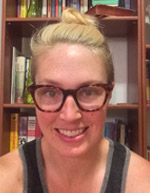
Dr Lee Berger
James Cook University
Characterising the gene and protein expression profiles underlying virulence of the amphibian-killing fungus, Batrachochytrium dendrobatidis
The pathogenic fungus, Batrachochytrium dendrobatidis (Bd), is responsible for ongoing global amphibian population declines. It is capable of infecting over 500 amphibian species, however its ability to cause disease in such a diverse range of hosts is still not fully understood. This is in part because there is extensive variability within the fungal lineage. While some fungal isolates cause severe disease and death, others appear to have little effect on the host. As next-generation sequencing technologies have become more accessible to studies involving non-model systems, our understanding of Bd pathogenicity has improved. In order to better understand Bd disease dynamics, this project will employ high-throughput sequencing to identify fungal gene expression corresponding to virulence in a range of Bd strains from eastern Australia, a region of both high Bd prevalence and impact.
Pathogenically and evolutionarily distinct Australian Bd isolates were grown under standard conditions at temperatures spanning fungal thermal tolerance. Throughout growth trials, phenotypic measurements of zoospore size, zoosporangial size, immunosuppressive ability, and growth rate were taken. Ribonucleic acid (RNA) samples were taken at two time points for RNA-sequencing. Phenotypic data analysis is in progress, and following this the most biologically disparate strains will be prepared for sequencing. Once sequencing is completed, transcriptomic data will be integrated with phenotypic data to bridge the gap between genotype and phenotype in this system. Putative virulence genes will be identified, generating targets for future functional genomics studies, and in turn informing host-pathogen-environment dynamics and related amphibian conservation efforts.
The EAPSI program allowed me to work with one of the most prominent and influential labs studying Bd. I was able to work with strains of the fungus that were previously unavailable to me, which expanded my coverage and understanding of this system. More importantly, I was able to learn lab techniques from leaders in the field, which will continue to improve my research throughout my PhD.
While I could have collaborated with the One Health Research Group remotely, being able to interact with other researchers in person is far more beneficial on a number of levels. I could not have generated the collaborative ties that I made this summer without the EAPSI program. International research has always been a goal for me, and being able to undertake it this early in my research has reaffirmed this ambition. In studies of disease, the importance of international collaboration cannot be overstated. As a disease ecologist, I plan to continue in this vein of transparent, cooperative, equal exchange throughout my scientific career.
Caitlin McDonald's visit to our One Health Research Group at James Cook University was highly productive and benefited all involved. She successfully validated methods and obtained some original and publishable studies using our fungal isolates. The study aligned well with her PhD and the aims of our group, and she has been able to continue analysing the data on her return to the US. Caitlin's enthusiasm and competency ensured our group enjoyed hosting her and I'm sure we will continue collaborating in the long term. If you have further candidates like Caitlin we would welcome them at JCU! Interacting closely with colleagues internationally is a valuable and stimulating part of research, and I commend your investment in this well coordinated and efficient program.

Professor Tony Guttmann
The University of Melbourne
Analysing patterns in permutations
I investigated a generalised construction of sorting machines and their applicability to open questions regarding the enumeration and characterisation of permutation classes. A C-machine is a sorting machine (or, from a different but equivalent perspective, a generating machine) that generalises the notions of stacks and queues. Many interesting questions can be viewed through the lens of C-machines. The goal of the project was to use the Method of Differential Approximants to analyse the asymptotic behaviour of certain permutation classes that are generated by C-machines.
During the research period, I met frequently with my host, Dr Tony Guttmann, to discuss my work. He taught me how to apply the Method of Differential Approximants to my specific research problems. Additionally, we discussed several extensions to the method that may be applicable to other problems in the future. This research is expected to generate at least one peer-reviewed journal publication as well as free and open-source software that implements the method.
This project has the potential to be high-impact on research in enumerative combinatorics by allowing researchers to analyse their combinatorial models using the software produced. This work would not have been possible without frequent face-to-face meetings with my host.
Collaboration is extremely important in mathematics. I have had international collaborations before, and this experience was just as valuable as those previous projects.
It was both a pleasure and of considerable mutual benefit to have Jay visit. His expertise in the area of his PhD thesis was very helpful to my own work, and Jay learnt a lot about methods of series analysis and is writing some Maple codes implementing some of the most important ideas. These programs should be of widespread utility to many people working in various aspects of algebraic combinatorics and computer science. Jay also engaged with other members of the Department, and in the short time he was here became a valued member of our scientific community.
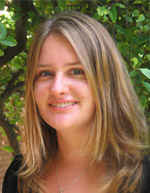
Dr Janice Lough
Australian Institute of Marine Science
Synthesising geochemical and growth banding proxies from Great Barrier Reef coral records
The ocean north of Australia is an engine for regional and global climate. Sea surface temperatures here are linked to the El Niño-Southern Oscillation (ENSO), and drive fluctuations in the Australasian monsoon. Corals in this region respond to stresses, including warming and ocean acidification, that are intensifying with current climate trends. Knowing how corals have responded to stressors in the past can help researchers predict how reefs will respond to current climate change. However, instrumental data of past climate are sparse at best. This study uses coral paleoclimate records to fill this knowledge gap.
My Masters research focuses on Porites coral cores from five sites in the Great Barrier Reef: Portland Roads, Eel, 13-050, Nomad, and Clerke. Together, these corals span nearshore to offshore environments, and provide a record that extends from 1970 to 2008 with monthly measurements of geochemistry, growth banding, and luminescence. This exceptionally high resolution allows for the measurement of short-lived climate phenomena, such as El Niño and monsoons, that can impact coral health.
I was surprised at how closely this project proceeded according to the original EAPSI proposal. All expected and hoped-for measurements were completed smoothly and on time. Prior to the EAPSI program, I had treated these corals solely as recorders of climate, but the summer at the Australian Institute of Marine Science (AIMS) reminded me that these corals were living things. Researchers at AIMS are studying the effects of climate change on my corals’ modern counterparts, and their insights were invaluable. My visits to the reef gave me vital firsthand experience of the state of the reef, from crown-of-thorns starfish outbreaks to disease, and the impacts of the growing El Niño.
The time spent at AIMS was my first experience both with international research and with research in a non-university setting. I was incredibly impressed by both. This experience has made me much more likely to pursue similar opportunities in the future.
It was a great pleasure having Emma visit and work with us at AIMS. She came well prepared with clear objectives that she achieved during her relatively short stay. Emma was thoughtful, inquiring, hardworking and, most importantly, enthusiastic about her research activities. She fully participated in the working life of AIMS and took full advantage of the opportunities for visiting and exploring northern Queensland. AIMS would be very willing to host similar high calibre students through the EAPSI Program in the future.
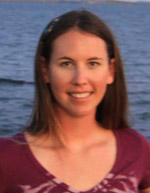
A/Professor Catriona Hurd
University of Tasmania
Effects of ocean acidification and eutrophication on the growth of macroalgae Ulva sp.
This project investigated how the changing marine environment affects the growth rate of a weedy macroalgae, Ulva sp. The two environmental variables that were manipulated were pH and nutrients levels. These two factors may interact to affect Ulva sp. growth rates. Changing ocean pH is a phenomenon termed ocean acidification and it is caused by increased absorption of atmospheric carbon dioxide in seawater, which changes water chemistry and lowers pH. Nutrient enrichment, or eutrophication, is mainly caused by human activities such as agriculture and is often the principle driver of green-tide blooms of Ulva sp. It is predicted that ocean acidification may increase growth rates of Ulva sp. as well because of increased carbon dioxide availability. Ocean acidification is occurring worldwide and eutrophication occurs near heavily populated coasts. How these two factors affect the growth rate of Ulva sp. when occurring simultaneously has not been thoroughly investigated. We grew Ulva sp. in tanks under several different combinations of high and low pH and nutrient treatments to not only determine if pH affects their growth, but also if pH affects how they will respond to different levels of nutrients.
A state of the art ocean acidification system was used for a growth experiment of the macroalgae Ulva sp. The goal of the experiment was to grow Ulva sp. under a cross of three levels of pH (present day, and two future scenario levels) and two levels of nutrients (low and high), and then measure growth rates and several physiological variables to determine how the algae would respond to the different treatments. The main findings in our experiment was that Ulva sp. responded to the nutrient treatments, but pH did not have an effect on the various physiological variables measured. Moreover, we found that there was no interacting effect between pH and nutrients. This research project shows us that opportunistic macroalgae species are highly responsive to eutrophication, and may be able to maintain this ability across multiple pH scenarios. These results highlight the importance of regulating eutrophication, even in the face of major environmental changes such as ocean acidification.
This project has shown that under the laboratory conditions used in Tasmania, pH had no effect on the physiological variables measured, while nutrients had a strong effect. Although I did not expect these results, they are still interesting, valuable, and have inspired more questions about the system I am working in. My future goals for this particular investigation are to change the lab conditions (i.e., lighting levels) and to measure more physiological variables that I was not able to measure in Tasmania. I plan on presenting the results from the Tasmania project at meetings within the next year.
I have always realised that international collaboration is important. My experience working with a group of international researchers has increased my knowledge in scientific research and my confidence in my abilities as a researcher. It was great to be able to accomplish a successful project in just seven weeks, and now I know that this is something that is possible. Creating a network with scientists in Australia will be very beneficial to me in the future, as I plan on continuing to work in this field.
It was a pleasure to have Leah working in my laboratory. This was a challenging research project: Leah rose the all the challenges, and achieved an excellent data set that will be published in a top international journal in the field of photosynthesis/algal physiology. She learnt new experimental skills including the use of a state-of-the-art ocean acidification culture system, new physiological metrics for assessing algal responses to ocean acidification, and an experimental design that was new to her. Part of the experience was to work with other members of my lab group - she quickly became a popular and respected team member, who was able to co-ordinate a complex experiment. In short, Leah was a delight to have in my laboratory, and should the opportunity arise, I would welcome her back in the future.

Dr Dmytro Matsypura
The University of Sydney
Optimal design of time-variant networks with uncertainty
This research project’s goal was to devise mathematical strategies for designing efficient networks that change over time. Examples of such networks include road systems, railways, power grids, and telecommunication networks. Because networks form the backbone of many integral components of society, designing efficient network layouts is crucial. Historically, network design studies have predominantly emphasised the final design while ignoring uncertainties that are inherent in the future, such as construction delays, variable user demand, or network component failures. This research aims to devise network design strategies that take both time and future uncertainties into account.
One defining feature of this work was that we considered decision-dependent uncertainties. In other words, the network designer’s actions directly affect the likelihood of future uncertain outcomes. A simple example to understand this concept is a road network. By reinforcing certain bridges within the road network, the likelihood that the strengthened bridges fail (for example due to an earthquake) is diminished. Within this context, our methods aim to produce the best strategies for bridge reinforcement while working with a limited budget. The strategies and models we research are general enough that they can be applied to the design of many other types of networks and many other types of uncertainties.
I spent two months working with Dr Dmytro Matsypura, one of the pioneering experts in time-varying network design, at the University of Sydney. I created a two-stage stochastic programming model for the optimal design of physical networks with decision-dependent uncertainty. I created and implemented a complete enumeration algorithm and a sampling approximation algorithm to solve this model. I’ve experienced firsthand the computational difficulties of solving problems with decision-dependent uncertainties. For this reason, much of my current work is focusing on developing more efficient algorithms while maintaining generality of the methods. The creation of faster, better algorithms in the area of network design will help other researchers in this field. We anticipate submitting a journal publication on this work in the coming months.
My time in Sydney was invaluable for the progress of this project. Dr Matsypura was always eager to help and his expert advice helped steer me around many pitfalls and roadblocks. I also benefitted professionally from many discussions with faculty members of the Business Analytics department at the University of Sydney. I believe this project represents a very well-executed truly collaborative project. My experience in stochastic optimisation and Dr Matsypura’s expertise in network optimisation allowed for the successful execution of this project, which drew from both areas. I’ve built professional relationships that are ongoing and I expect will last throughout my career.
I found this international collaboration to be incredibly fruitful. It’s amazing to travel halfway around the world and find that researchers in Sydney share much of the same technical knowledge that I’ve acquired. Likewise, it’s exciting to experience different ways of tackling problems and a different work culture. I believe that observing and understanding different perspectives is always beneficial, and I love meeting new people with different cultural backgrounds. I’m convinced that my research ability, career prospects, and intellectual maturity have all grown as a result of this program.
I believe Nathaniel and I both have benefitted greatly from this opportunity. Although we started working on the project before Nathaniel’s visit, his two-month presence at the University of Sydney completely changed the dynamic of our collaboration. We have made significant progress, which would have been impossible over long distance. I wish he could have stayed for longer as part of the EAPSI program. That would have given us time to progress even further and perhaps finish the project.
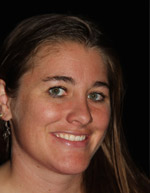
A/Professor Richard Manasseh
Swinburne University of Technology
Maximising the velocity of incoming ocean waves with wave-enhancing resonance chambers for increased energy production
At The University of Hawaii, it was found that creating a resonance chamber for ocean turbines can increase the energy output of ocean waves. Research at Swinburne University of Technology sought to determine the optimal arrangement of chambers, as it is known, for example, that oscillating water columns placed certain distances apart actually dampen wave action, undermining their own effectiveness.
It has been shown that three chambers placed next to each other in parallel is a less effective arrangement than three times the output of a single chamber. Furthermore, more data needs to be analysed to confirm the ideal distance between chambers and subsequently how the chambers should be arranged.
This research has the potential to create a paper which will discuss the optimal arrangement of chambers to increase electricity production.
I now understand how things are run differently in other countries, for example, culture and collaboration. At my home campus, I did not have any meetings with other researchers focusing on similar work; in Australia we discussed ideas more regularly.
Maura immersed herself in the work as soon as she arrived and was able to interact effectively with the final-year student team I had asked to set the experiments up for her. Though they were on winter break at the time, they nonetheless came in to help her. Prior to her visit we had never thought about the type of wave-machine concept developed in Hawaii and it took a bit of analysis on my part to figure out that it really fell into the same broad category as what we had studied before. Even this analysis is helpful for our other work. As Maura's experiments progressed we came to understand that we had the chance to make findings on a whole class of wave-power devices that had never been studied in arrays (groups) before. Maura has collected a huge amount of data and now the challenge is to understand enough of these results and their statistical quality to direct the final-years to fill in the gaps as they enter the last weeks of semester. As a general lesson, for genuinely novel experiments requiring quite a bit of set-up, having local undergraduates helping before and after was really necessary to have the visiting scholar working effectively. An alternative is to pair the visitor with a local PhD student. Maura also demonstrated her experiment on our Open Day and even showed it to a local state government politician.
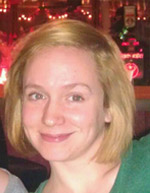
Dr James Miller-Jones
Curtin University
Black holes in southern globular clusters
My project focused on using observations with the Australia Telescope Compact Array (ATCA) radio interferometer to search for black holes in globular star clusters. Theory had previously predicted that black holes should be rare in globular clusters, but recent observations from our group have found several black hole candidates in Milky Way globular clusters. We have since undertaken a radio survey looking for more black holes in globular clusters using the Very Large Array (VLA), which can only access globular clusters over a certain latitude. The goal of my EAPSI project was to use ATCA to analyse globular clusters from the southern sky to get more robust statistics on the frequency of black holes in globular clusters, and see if black hole frequency correlates with certain cluster characteristics.
My primary focus was on the reduction of data from ATCA and VLA observations. This included data calibration, the removal of Radio Frequency Interference (RFI) from our data sets, and creating radio images of the sample cluster cores to inspect them for any significant radio sources. The completion of these tasks required learning how to use new data reduction software, as well as gain more experience using the reduction software I was already using at my home institution. I am now preparing a publication for one of our new candidates, and worked on another for which I, and another one of my host’s students, prepared a follow up telescope proposal.
The progress I made and skills that I learned during my fellowship made me a more confident and competent researcher, which definitely cemented my desire to continue doing research beyond graduate school.
I absolutely enjoyed the collaborative experience I had while in the Australian astronomy community. I was able to meet and connect with astronomers in a variety of disciplines, as well as those that work on projects similar to mine. These are researchers I will likely/hopefully be meeting again which makes these collaborative opportunities very valuable.
It was a great pleasure to host Laura during her EAPSI Fellowship. The two months that she spent at Curtin University were extremely productive, and I was delighted with the progress that she made. At the start of her Fellowship Laura assisted with our radio-frequency observations using ATCA, which provided an excellent, hands-on introduction to radio interferometry. She quickly picked up new software packages, and worked hard to complete the analysis of a number of different data sets. This led to the identification of a new black hole candidate system, and she is now writing up this result for publication. Finally, to follow up some promising new results she teamed with one of my graduate students to put together an application for telescope time on one of the world's premier radio telescopes.
Laura was a very welcome addition to the group here at Curtin University. She worked closely with my own students, and the exchange of knowledge was extremely beneficial for all parties.
In summary, Laura worked hard and took full advantage of the excellent opportunity provided by the EAPSI scheme. I hope that this will be the first of several visits between the teams from Michigan State University and Curtin University, and I look forward to continuing our collaboration over the coming years.
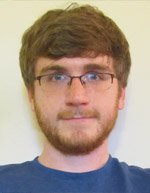
Professor David Shum
Griffith University
Testing predictions of a memory model: Are the index and features of a memory separate?
Successfully interacting with the environment depends upon the ability to briefly retain information in visual working memory. Visual working memory has recently been characterised as a balancing act, given that the maximum resolution of each memory is constrained by the total amount of information stored. How this trade-off is implemented in the brain remains an open question and one that is vital to developing accurate theories of memory. The goal of this project is to better understand this trade-off by testing memory recall in individuals with brain damage. The effects that the brain damage has on memory precision will provide insights into how visual working memory may be implemented in the brain.
To better understand the mechanisms underlying the trade-off between the quality and quantity of memories stored in visual working memory, a lesion model approach will be used. Behavioural data collected from individuals with brain damage performing a delayed estimation task, which measures the quality of an individual memory representation, was compared to simulations from a computational model of memory called the Binding Pool. The model predicts that damage to the individuation of memories causes binding errors, but only when multiple items are being stored. However, if there is damage to the visual features that support memory, then memory quality will be degraded regardless of the number of items being stored. Successful predictions of the model provide confirmatory support for this model of human memory.
While in Australia, I was able to collect about half the sample I need to be able to make accurate comparisons with the model. Data collection will continue for another several months. Importantly, the data I have collected thus far demonstrates that participants can actually perform the task, which would be problematic if they could not, and that there are some patterns of data when looking at the individual differences. These individual differences may be related to the location of the brain damage, which is the prediction of the model.
The next step in this project, besides collecting more data from individuals with brain damage, is to collect data from matched control participants. This portion of the experiment will be conducted at Pennsylvania State University and will begin in late 2015. This research should culminate into at least one publication that focuses on the how the trade-off between the quality of a visual memory and the quantity of visual memories is represented in the brain. Furthermore, this work will be a significant portion of my dissertation.
Collaboration, and specifically international collaboration, is a valuable experience for any researcher. I believe working on this project has not only strengthened my ability to collaborate with other researchers, but also helped me learn alternative methods (i.e. lesion-model approaches) to study my interests. These skills will certainly be useful for a career in academic research.
Garrett contributed positively to our research group and good progress was made on our joint project during his visit. A highlight was his well-attended and well-received presentation of his initial findings to a combined group of researchers and clinicians. The overall experience of hosting a research student through this program was successful, and it is hoped that it will lead to future collaborations between our universities.
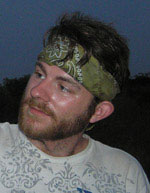
Professor Craig Moritz
Australian National University
Genomic insights into the hyperdiversification of Australian geckos from hybrid zone analysis
Speciation is a fundamental process in biology and understanding the mechanisms that promote and/or limit biotic diversification has been a core theme in evolutionary science. Hybrid zones are regions where two closely-related species exchange genetic material and thus demonstrate that while reproductive isolation is not necessary for speciation, important biotic and abiotic variables prevent the complete merging of the divergent lineages. This project leverages the power of next-generation sequencing, an emerging model system of diversification in Australia (Heteronotia), and a strong international alliance to impart insights into speciation processes, a primary goal in evolutionary biology. By incorporating exome data using next-generation sequencing, this project includes a genome-wide functional perspective on understanding the dynamics of speciation, highlighting the exceptional value that genomics has on understanding natural history.
I conducted and accomplished targeted sequence capture of exonic regions in Heteronotia geckos of Australia. In total I gathered over 4,600 exons among 52 individual Heteronotia geckos. This technique also allowed for by-catch of other genomic regions including partial to complete mitochondrial genomes. I have extracted these and continue to do analyses on the data I gathered in order to elucidate hybrid dynamics among Heteronotia gecko lineages in contact zones.
My research will help to understand broad patterns of diversification. I will leverage the power of next-generation sequencing to quantify gene flow and the permeability of thousands of genes across three hybrid zones between divergent lineages in the widespread Bynoe’s gecko (Heteronotia binoei).
This research was conducted in collaboration with Dr Craig Moritz who is a world renowned expert in the field of evolutionary biology and an Australian Research Council Laureate Fellow, at the Australia National University in Canberra, Australia. This project will strengthen international collaboration between the University of Texas at Arlington and the Australian National University. Dr Craig Moritz, the host investigator, imparted his expertise, insight, and wisdom that will have a significant and lasting impact in my training. As I continue to expand my dissertation research using the results from the EAPSI project as a foundation, I will provide research opportunities to bright undergraduates from the diverse student body at the University of Texas at Arlington. Additionally, I am committed to outreach and will use this research opportunity as a focal point in generating concept-oriented lessons and workshops on evolution, speciation, and diversification for local chapters of naturalist and wildlife societies that are abundant in the Dallas-Fort Worth region of Texas.
James spent time in my lab developing a genomic dataset with which to test for gene flow between different evolutionary lineages of the gecko lizard Heteronotia binoei. He first sequenced a marker used to define this lineages in the 1st pace (mtDNA) and then selected samples from our collections near geographic boundaries of these lineages to test using 1000's of nuclear genes. To obtain the nDNA loci, he used a custom exon capture approach developed in my lab and tool this experiment through to sequencing. He is now analysing the resulting data back in his home lab at UT Arlington. This wil form the basis of a chapter of hhis dissertation and, I expect, a good joint publication.
Throughout James demonstrated care in his empirical work and a solid understanding of the technical methods and subsequent bioinformatics, as well as the conceptual questions around speciation and phylogeography. He was a good lab citizen and contributed to discussions in my lab group.

A/Professor Kylie Pitt
Griffith University
Determining the effects of a changing global climate on the early life stages of jellyfish
Jellyfish are important organisms in many coastal systems. Blooms of jellyfish have implications for coastal food webs, including voracious consumption of mesozooplankton, as well as recycling nutrients within the water column and contribution to benthic production. Despite little data, jellyfish are frequently claimed to be robust to many environmental stressors. Interactive effects of multiple climate stressors must be studied to determine what will realistically happen to these organisms with a changing climate. As with any organism, the health and survival of early life stages is a major factor determining the size of the adult populations. The growth and survival of early life stages can directly determine the size of adult populations, but most jellyfish research has focused on the adult forms, or medusae. This study will determine the combined or interactive effects of environmental stressors on jellyfish polyps, the early life stage which directly determines the size of adult populations.
In hypoxic waters, pH will naturally decrease due to enhanced respiration. Even under normal oxygen conditions, if CO2 concentrations are high, organisms are not able to respire normally despite the normoxic conditions. Thus, it is essential to look at the interaction of acidification and hypoxia, because in nature they occur concurrently. This study will test the response of Aurelia aurita polyps to hypoxia, reduced pH (i.e. more acidic conditions) and the synergistic effect of both, by determining changes in asexual reproduction, metabolism, and respiration. In addition to results specific to forecasting localised jellyfish blooms, data produced from this project will allow direct quantification of the response of jellyfish polyps to a changing climate; information which can be built in to climate and ecosystem models.
To address these project aims, a 5-week lab experiment was performed with Aurelia aurita jellyfish polyps in treatments of hypoxia, acidification, and a combination of both. A gas flow control system was built to provide specific combinations of tanked CO2, N2, and O2 gasses to achieve desired treatment values. Asexual reproduction, respiration, and metabolism were quantified throughout the experiment.
The EAPSI program was extremely rewarding from a research perspective. I had previously attempted a similar experimental design at my home university without success, due to lack of the gas controlling system. Being able to visit Dr Pitt’s lab at Griffith University and use this system allowed me to answer a research question that I had been interested in for a while. The results of this project are currently being written up as a manuscript and will be a chapter in my PhD dissertation.
This experience opened many opportunities for me in terms of collaboration. I worked closely with another PhD student while I was in Australia, who is currently doing a follow‐up to my experiment that will build nicely on my results. Dr Pitt, my US advisor, and I have already been in discussion about other future opportunities for our labs to collaborate in having students from Australia visit the US. Overall, I learned a significant amount about research and working in academia in another country, and am very grateful for this experience.
Laura completed a laboratory‐based experiment while visiting Griffith University and this will form one chapter of her PhD dissertation. For her experiment, Laura used a newly acquired system that allows us to mix different combinations of nitrogen, oxygen and carbon dioxide, thereby allowing us to mimic ocean various acidification and hypoxia scenarios. Laura's experience with this gas system is valuable as her laboratory at University of North Carolina Wilmington is hoping to install a similar system soon. Moreover, Laura introduced a new technique to my research group - the use of radioisotopes for measuring metabolic responses to stress. Consequently both institutions have gained much from Laura's visit to Griffith University.
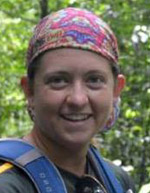
A/Professor Rob Brander
University of New South Wales
Rip current vulnerability in Australia: Bridging the physical and social gap of an international hazard
Rip currents are the dangerous, concentrated flows of water at beaches that can carry swimmers rapidly away from shore. They lead to many rescues, injuries, and deaths in coastal countries each year (~100 fatalities per year in the US and ~21 in Australia). Until recently, few efforts had been made to transfer the growing body of scientific knowledge on the physical causes and consequences of these currents to the public. In the last decade, some of the first research was published evaluating public knowledge of rips, escape strategies, and awareness of warning systems; several of these were co-authored by my host Dr Brander, who is also a leading expert in the physical science investigation of coastal current patterns. I had noticed that none of the publications on beach-goer knowledge evaluated whether swimmer behaviour (where they choose to swim on a rip-prone beach) reflected scientist evaluation of their rip-based knowledge or their self-evaluated awareness. My EAPSI project, therefore, interviewed swimmers on Bondi Beach, because it has anywhere from one to five rip currents on any given day, and will now analyse the spatial location of interviews to look for spatial trends in subject’s answers and behaviour, especially whether more vulnerable subjects are choosing to swim closer to rips.
I spent at least two days each week digitising data and beginning to program spatial analysis algorithms. I spent four days per week attempting to interview subjects on site, however weather did not always cooperate with my efforts (if it is too cold or windy there are no swimmers to recruit). If it was impossible to recruit on a particular day, I spent that day on writing or other pre-analysis. At my host’s request I also spent some time on other academic activities, such as giving lectures at my host university (UNSW) and the nearby University of Sydney, where a recent PhD graduate is now a post-doc. I also collaboratively ran two days of field experiments with this post-doc and another of my host’s (current) students. These activities led to a complete dataset for my EAPSI project and additional data towards one of my dissertation chapters.
Repeatedly approaching strangers to recruit them as subjects, day after day, for hours at a time, is incredibly exhausting. I would much rather run my usual physical experiments with velocimeters and wave current meter. I am very glad to have this human-environment interaction dataset as a result of EAPSI, but I think I will return to (and stick with) the physical sciences!
Many of the “big names” in coastal geomorphology have recently retired or will retire soon, leaving those few who are still highly active in conducting new research scattered across several countries. To continue growing the field, and fill these new gaps, it is important for those professors still current and widely known to increase their collaborative efforts. Not only will they manage to generate increased interest and possible hires in their present countries, but our field will benefit from testing experiments at a wide variety of coastal sites. As geography moves more heavily into modelling, it is imperative to ensure your model is not site-specific, and international collaboration is a fun and beneficial way to do that.
Sarah was an excellent self-motivated student who applied herself diligently to her research project throughout her time at UNSW. Her project was largely independent and she was able to overcome a key logistical constraint (less swimmers and beachgoers in winter) through almost daily fieldwork including weekends. Her results are of high quality that will no doubt result in an academic journal publication. At the same time her visit allowed for the development of ongoing research collaboration between Texas A&M and UNSW Australia. The only negative of the program which was outside of Sarah’s control, was that the timing of the scholarship coincided with a very heavy teaching schedule for me and I was unable to work directly with Sarah as much as I would have liked. This is something that might be considered in the future, with visits to Australia timed outside of sessional teaching periods.
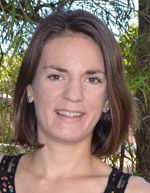
Dr Stephen Bremner
University of New South Wales
Coupled optical and electrical modelling of nanostructured silicon solar cells
Ultra-thin silicon solar cells are promising candidates for future generations of photovoltaic devices due to decreased material cost and higher performance. However, poor light absorption in silicon necessitates the use of light-enhancement methods. The Solar Power Lab at Arizona State University has previously developed a repeatable, large-area nanostructuring process for increasing light absorption in thin silicon substrates. Predictive theoretical modelling is further needed to guide device development on the experimental level and investigate the suitability of nanostructured silicon in high-efficiency solar cells. To achieve that aim, I worked with Dr Stephen Bremner at the University of New South Wales (UNSW) in Sydney, Australia to create and optimise coupled optical and electrical models of ultra-thin nanostructured silicon solar cells.
The project utilised the empirically calibrated optical models of nanostructured substrates using frequency domain finite element (FEM) numerical methods to obtain the optical generation rate in the substrate. The optical generation rate was then used as an input into semiconductor device models to evaluate current voltage characteristics resulting from the unique generation rate profile due to the way that light interacts with the nanostructures. The outcome of the project was a basic coupled optical and electrical model using commercially available software. The model creates a starting point for analysis and iterative refinement of the model that can identify potential designs for experimental verification in the lab.
The host mentor and the research group have made my short stay at UNSW productive and enjoyable through their help, support, and fruitful discussion. I am looking forward to continuing the collaboration in the future.
Spending eight weeks in an international research setting made me realise how long-distance collaborations that my host and home university had already established years prior, can be much more dynamic through face-to-face interaction for sharing ideas and developing new projects. Working with a new research group also brings a fresh perspective to one’s research project that can propel the research forward at both the individual and group level.
This project was successful in coordinating modelling efforts underway at both UNSW and Arizona State University (ASU). The generation of an optically and electrically coupled model for these nanostructured devices is a particularly important development for research efforts underway at UNSW, with previous work being restricted to optical models. Natasa’s contribution during her stay was outstanding and she showed herself to be an excellent, self-motivated, and reliable work mate. Her efforts even led to further projects developing, with the collaboration between Natasa and UNSW based researchers ongoing. There was an impressive amount of progress completed in eight weeks and I am sure there will be high quality research outputs stemming directly from Natasa’s stay at UNSW.

Professor Brad Potts
University of Tasmania
Understanding plant responses to global change through the lens of evolutionary history
Global change represents a primary threat to biodiversity worldwide, yet we lack the ability to accurately predict which species will fare better, and which will decline, in rapidly changing environments. As such, my research aims to better our understanding of plant responses to global change through the lens of evolutionary history. My previous dissertation work has shown that on a global scale, plant growth responses to one agent of global change, nitrogen (N) enrichment of soils, are shaped by their evolutionary past, where closer relatives respond more similarly than expected at random. However, whether this phylogenetic structuring of plant growth responses to N occurs at smaller phylogenetic scales, for example across co-occurring species within the same genus, is not currently known. Further, the ‘worldwide economics spectrum’ theory postulates that species that have evolved, in particular leaf, stem, and root functional traits, have higher capacities for resource uptake; from this theory we should predict that such species grow more in higher soil N environments. Whether variation in such functional traits predicts plant responses to N enrichment has yet to be explicitly examined. Thus, the goals of my EAPSI project were to address these issues using the group 30 ecologically unique Eucalyptus tree species that are native to the island state of Tasmania, Australia.
A controlled greenhouse experiment was used to quantify growth responses of 21 Tasmanian eucalypt species to N enrichment. A phylogeny was then reconstructed for these species from Diversity Array Technology (DArT) genetic markers and phylogenetic signal calculated for responses to N. Phylogenetic generalised least squares (PGLS) regressions, which account for non-independence among species due to shared evolutionary history, were implemented to determine whether leaf, stem, and root functional traits of the same greenhouse individuals predict responses to N enrichment.
We identified a significant phylogenetic signal of growth responses to nitrogen across the Tasmanian eucalypt species, confirming that phylogenetic structuring of plant growth responses to N enrichment persists at the plant genus level. However, PGLS regressions demonstrated that evolved variation in leaf, stem, and root functional traits is not associated with growth responses to N. This may be due to the limited range of functional variation exhibited by species within the Tasmanian eucalypt system compared to terrestrial species writ large. As such, the ‘worldwide economic spectrum’ theory may become less applicable at smaller phylogenetic scales.
Beyond working on my main project, I collaborated with another graduate student on two additional projects using the Tasmanian eucalypt system to understand the effects of phylogeny on plant-soil feedbacks. The first project was based on a greenhouse experiment testing the performance of 15 species inoculated with soils previously conditioned by each species. I conducted phylogenetic analyses on data from this experiment, which confirmed that the performance of focal seedling species increases with decreasing phylogenetic relatedness to conditioning species. The second project will build upon this and my current dissertation work by examining the effects of native mycorrhizal fungal communities on eucalypt growth responses to nitrogen. While in Tasmania, I collected soils from eucalypt species growing in two common gardens, and will use these in an upcoming greenhouse experiment designed to determine 1) whether species condition soil mycorrhizal fungal communities differently, 2) whether this is a mechanism shaping the phylogenetic Janzen-Connell effect in this group, and 3) whether there is a past evolutionary basis to how mycorrhizal fungal communities alter growth responses to nitrogen.
The EAPSI program allowed the opportunity to obtain and analyse a dataset that will culminate into the second chapter of my dissertation. The ability to work with and obtain feedback from the worlds’ experts on the Tasmanian eucalypts has broadened my knowledge of this system and thus enhanced the quality of my research. Further, I gained valuable insight into interesting research being conducted at the University of Tasmania. Overall, I left Australia more confident in my research and looking forward to future international research opportunities.
As my collaborations with researchers at the University of Tasmania have been exceptionally productive thus far, I will actively work towards sustaining and initiating collaborations with international researchers in the future. Ultimately, I hope that these collaborations lead to post-doc opportunities that jumpstart a career in academia.
Rachel was a great transient addition to the research group, bringing enthusiasm, ideas and new techniques. The visit allowed her to touch base with the natural system that she has been studying from afar through glasshouse experiments. Such visits are always welcome and a stimulus to reassess many of the ideas and interpretations we often take for granted. The visit to Tasmania provided her the opportunity to undertake collections, as well as discuss objectives and experimental designs for the next phase of experimentation in her PhD studies. Whilst here she provided a valuable contribution to help bring a long-running research publication to submission, and will continue ongoing collaboration on several aspects of research being undertaken in our research group and at the University of Tennessee.
© 2025 Australian Academy of Science